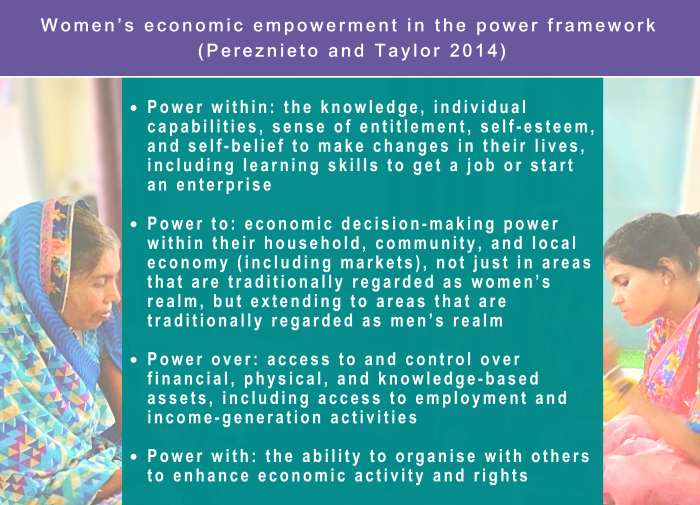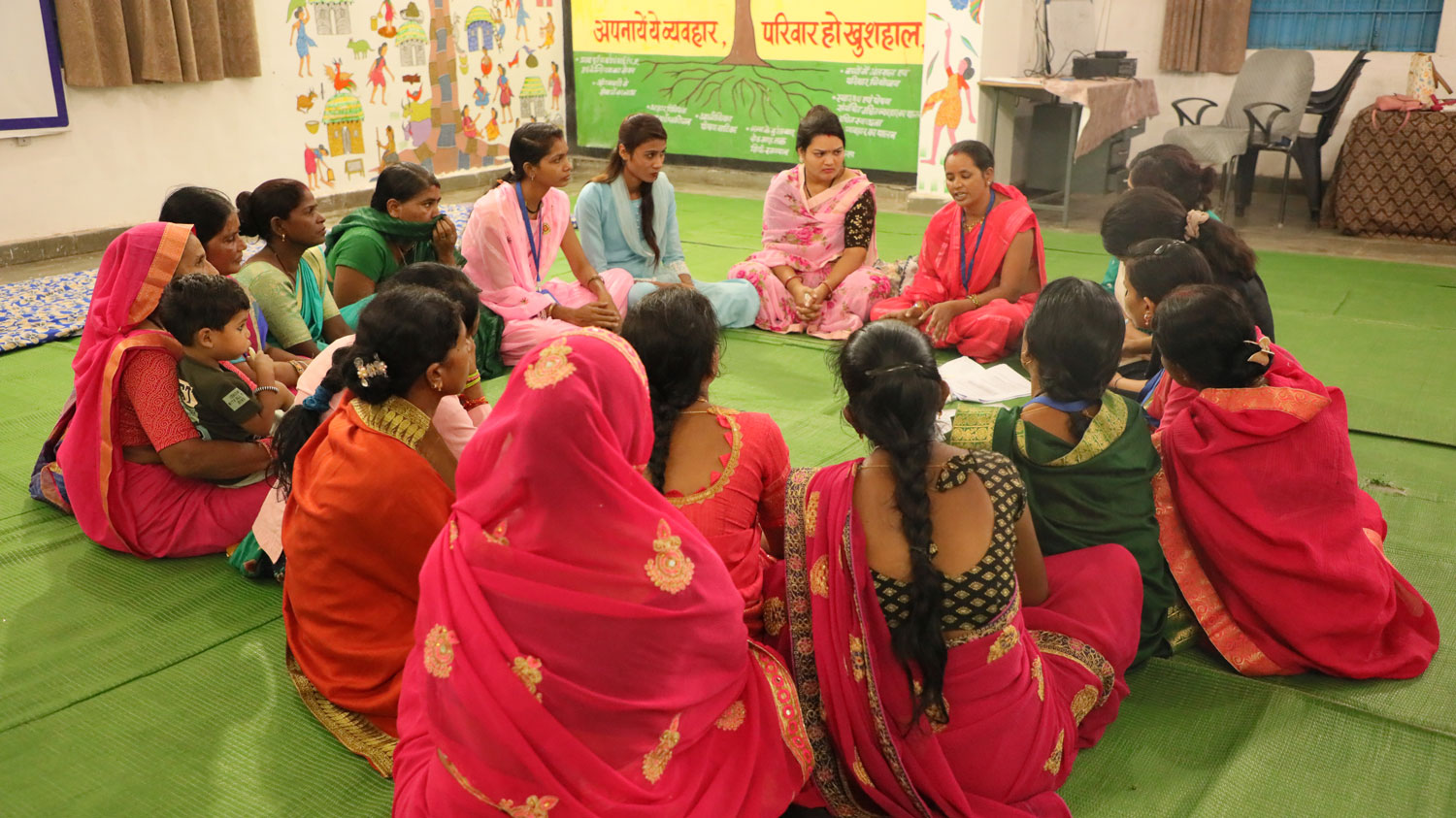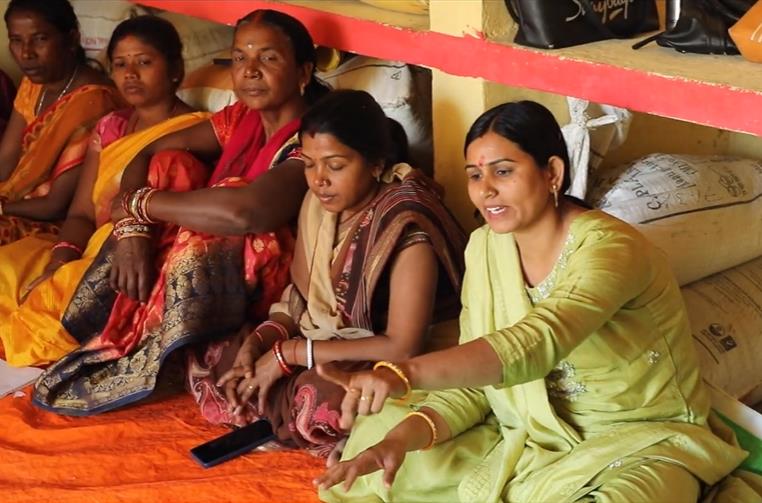The pandemic posed unprecedented challenges to people’s livelihoods and reinforced the growing and urgent need for sustainable and resilient avenues for rural women to engage in economic and income-generation activities. 3ie’s flagship empowerment program, ‘Swashakt: Empowering Indian Women’s Collectives’ supports projects that set up or replicate models for enhancing the scale and returns of women’s collective enterprises. Swashakt, launched with the support of the Bill & Melinda Gates Foundation in 2020, has now reached more than 6900 women across 480 villages in 10 Indian states who have become a part of farm or non-farm women’s collective enterprises. In this blog, we discuss how we define and measure women’s economic empowerment in the context of our program. The detailed framework is discussed in this working paper.
As a starting point, we surveyed the literature on the well-known frameworks that define women’s economic empowerment and analyze the role of collectivization for empowerment. Common to these frameworks is the concept of ‘power’– power of women in relation to men, states, markets, institutions and even other women – and ‘empowerment’ as a process that transforms unequal power relations. Feminists go beyond conceptualizing women’s economic empowerment as being an individual process or outcome and present it as a collective struggle to challenge and change the structural basis of unequal gender relations. Thus, mobilization of women or collectivization is a critical component of women’s economic empowerment.
As Swashakt projects increased the interactions of women with states, markets and institutions and brought women into spaces that are primarily male-dominated, we realized the importance of examining empowerment as a change in existing relationships between women and these agents. We adopted the ‘power framework’ to measure empowerment. The framework suggests four important dimensions for empowerment, which are ‘power within’, ‘power to’, ‘power over’ and ‘power with’ as articulated by Pereznieto and Taylor (2014). What differentiates Swashakt projects from similar livelihoods projects for women is that these mobilize women into collectives. Thus, it is essential to examine how women interact with each other within the collective and as a group with other agents. Hence, the importance of ‘power with’.
Having set the measurement framework, we developed an initial theory of change (ToC) for Swashakt. The ToC mapped the specific area of interventions in the projects such as the formation of women’s empowerment collectives, trainings, infrastructure development, use of technology, institutional and market linkages and product innovations to a set of outcomes reflective of the four dimensions of power discussed before (see the interventions illustrated here). We further reviewed and triangulated the ToC through a workshop with various stakeholders, including experts, academicians, donors and grassroots practitioners. While some outcomes from the initial ToC were retained, others were discarded and new ones added.
For example, stakeholders agreed that outcomes like women’s participation in entrepreneurial activities, their income from collective activities and other sources, their ownership and control over productive assets, including financial assets and own savings, were important outcomes, and these were retained. Women’s involvement in decision-making at the household, community and enterprise level were added as important indicators of women’s social capital and empowerment. Participants also emphasized that common financial indicators of business sustainability such as return on equity and viability ratios may not be as relevant to track and benchmark as these may not be attained in three years. It was thus decided that the projects would measure changes in production, sales, and gross profits of collectives.
Below, we present the final set of outcomes:
| Dimension | Outcomes measured |
|---|---|
| Power within | Skill development, self-esteem, confidence, social capital |
| Power to | Decision-making power in the household and community, mobility |
| Power over | Control over assets, income, participation in income generating activities |
| Power with | Participation in group entrepreneurial activities, within group decisions, interaction of the group with other economic agents and institutions |
Another important strand of discussion in the workshop was the sustainability of women’s collective enterprises. Swashakt was launched at a critical time when the outbreak of COVID-19 set back women’s empowerment by decades. Globally, between 2019 and 2020, women’s employment declined by 4.2 percent, representing a drop of 54 million jobs while unpaid work increased (ILO Policy Brief 2021). Women-owned businesses have also been affected disproportionately due to the pre-existing gender biases which further deepened during the pandemic (Manolova et al., 2020, Torres et al 2021). In this context, two additional outcomes measured at the collective level included enterprise production and sales. The evaluation team was also advised to include a qualitative assessment of the governance structure of the collectives. Our quantitative and qualitative evaluation tools incorporated these inputs and will soon be made available on our website.










hey, thank you for this informative blog post, we would love to work with you. We are also working for women's economic empowerment in India if you are more information so please visit our website: https://www.searchngo.org/